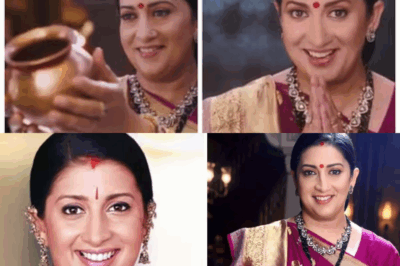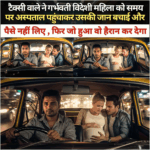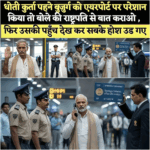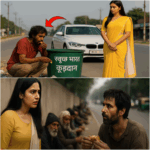From Meme to Makeover: Bhopal’s 90-Degree Railway Bridge and the Power of Public Satire
In the heart of Bhopal, a bridge meant to unite two bustling colonies has, in an ironic twist, united the entire country in laughter, disbelief, and eventually, collective action. The story of the city’s now-infamous 90-degree railway overbridge is not just a tale of engineering gone awry, but also a fascinating illustration of how humor and public scrutiny can drive real change in modern India.
The saga began in 2023, when construction commenced on a new railway overbridge in Bhopal’s Aishbagh area. Spanning 648 meters and costing ₹18 crore, the bridge was intended to ease the city’s notorious traffic congestion. Yet, what was supposed to be a symbol of progress quickly transformed into a national spectacle. Due to coordination issues between the Railways and the Public Works Department (PWD)—particularly regarding the shifting of electrical lines—the project, initially slated for 18 months, dragged on for three years. However, it wasn’t the delays that captured the public’s attention, but rather the bridge’s astonishingly sharp 90-degree turn. Videos of vehicles attempting, and often struggling, to navigate the abrupt corner went viral. One particularly popular clip joked about the need for a “car that can rotate 90 degrees” just to make it across. Soon, the bridge had earned the nickname “Statue of Confusion,” a tongue-in-cheek reference to India’s penchant for grand monuments and a pointed jab at bureaucratic blunders.

Social media exploded with memes, and a line from a Bollywood film—“Kisne banaya ye mujasima?” (Who made this statue?)—became the refrain of the hour, echoing across WhatsApp, Twitter, and Instagram. Users dubbed the bridge the “eighth wonder of the world” and the “eighth marvel of Bhopal,” and the phrase “Bhaiya, Bhopal ka aathvaan ajooba yahi hai!” (Brother, this is Bhopal’s eighth wonder!) became a running joke. While the memes were undeniably hilarious, they also highlighted a very real danger. Locals and experts alike pointed out that such an abrupt turn defied basic engineering principles and posed a significant risk of accidents. Residents voiced their frustrations in interviews and online posts, questioning how such a design could have been approved and why neither contractors nor engineers raised concerns earlier. “You don’t need an engineering degree to see that a 90-degree turn is dangerous,” said one commuter, while others wondered aloud how two vehicles could possibly cross paths safely at the turn.
The relentless criticism soon forced authorities to respond. The PWD, in coordination with the Railways, announced a major redesign: the bridge would be widened by three feet, and the infamous sharp turn would be replaced with a gentler curve. PWD Minister Rakesh Singh publicly acknowledged the issue and promised an investigation, while Chief Engineer V.D. Sharma explained to PTI that the original design was constrained by a lack of available land due to a nearby metro station. Yet, the public remained skeptical, arguing that good engineering should find solutions within constraints, not create new hazards. Within days, survey teams arrived on site, marking the bridge’s center point and beginning the process of redesign. The spot where the sharpest turn—measured at 88 degrees—had become the butt of national jokes was now the focus of serious correction.
The Bhopal bridge’s journey from civic project to viral sensation reveals deeper issues in India’s approach to urban planning. The delays and design flaws were not just the result of unfortunate circumstances, but also of systemic problems: a lack of coordination between agencies, rubber-stamp approvals, and a tendency for officials to defend mistakes rather than address them. The bridge became a symbol of every pothole, every half-finished flyover, and every inexplicable traffic jam that Indians encounter daily. It also demonstrated the remarkable power of public satire. In a country where formal complaints and protests often go unheard, memes succeeded in forcing a swift and meaningful response from authorities. The episode was picked up by national and international media, and the phrase “Bhopal Bridge” became shorthand for bureaucratic bungling.
Beyond the jokes, the bridge posed genuine dangers to drivers, especially at night or during poor weather, and eroded public trust in local authorities. What was meant to be a convenience turned into a daily ordeal for residents, and the fiasco raised important questions about the safety and oversight of India’s infrastructure projects. Yet, the story also offers hope. The public outcry, delivered with wit and creativity, succeeded where petitions and protests often fail. Officials not only agreed to redesign the bridge, but also promised to review other projects for similar flaws, making the episode a case study in the unexpected power of digital dissent.
As reconstruction begins, with survey teams and engineers working to replace the infamous turn with a safer curve, the people of Bhopal are cautiously optimistic. Some even joke that the bridge’s viral fame might finally bring much-needed attention to other neglected projects in the city. The Bhopal bridge is more than just a meme; it is a mirror reflecting both the challenges and opportunities of modern India. In a rapidly urbanizing nation, the need for smart, people-centric infrastructure has never been greater. The episode has sparked conversations in engineering colleges, urban planning forums, and government offices alike, reminding everyone that design is not just about aesthetics or efficiency, but about empathy and foresight.

In the end, the Bhopal bridge story is a rare example of a single issue capturing the national imagination—not through tragedy or scandal, but through a shared sense of humor and a collective demand for better. As work continues on the new, improved bridge, one can only hope that its story will inspire a new era of accountability and innovation in Indian infrastructure. Years from now, when the bridge is finally complete and the memes have faded, perhaps it will stand—not as a “Statue of Confusion,” but as a symbol of what’s possible when citizens, officials, and engineers work together, united by the simple desire to build a better tomorrow.
News
Salman Khan’s Playful Reaction: When Vicky Kaushal Casually Proposed to Katrina Kaif
Salman Khan’s Playful Reaction: When Vicky Kaushal Casually Proposed to Katrina Kaif Bollywood has always been a treasure trove of…
Krushna Abhishek Opens Up About ‘Accidental’ Marriage, Family Ties, and Govinda Rift on The Kapil Sharma Show
Krushna Abhishek Opens Up About ‘Accidental’ Marriage, Family Ties, and Govinda Rift on The Kapil Sharma Show Renowned comedian and…
Smriti Irani’s Return as Tulsi in “Kyunki Saas Bhi Kabhi Bahu Thi 2” Sends Social Media Into a Frenzy
Smriti Irani’s Return as Tulsi in “Kyunki Saas Bhi Kabhi Bahu Thi 2” Sends Social Media Into a Frenzy After…
Nora Fatehi Spotted in Tears at Airport; Bodyguard Labels Fan ‘Chhapri’ in Viral Incident
Nora Fatehi Spotted in Tears at Airport; Bodyguard Labels Fan ‘Chhapri’ in Viral Incident Bollywood sensation Nora Fatehi, known for…
What Did Kiran Singh Say to Khesari Lal Yadav About Roshan Rohi’s Bail? Bhojpuri Industry Faces Backlash
What Did Kiran Singh Say to Khesari Lal Yadav About Roshan Rohi’s Bail? Bhojpuri Industry Faces Backlash The Bhojpuri entertainment…
Kataria Shares Honest Take on Ajju0008 and Pratibha’s Divorce Drama: Calls for Privacy and Maturity
Kataria Shares Honest Take on Ajju0008 and Pratibha’s Divorce Drama: Calls for Privacy and Maturity The Indian influencer and gaming…
End of content
No more pages to load












